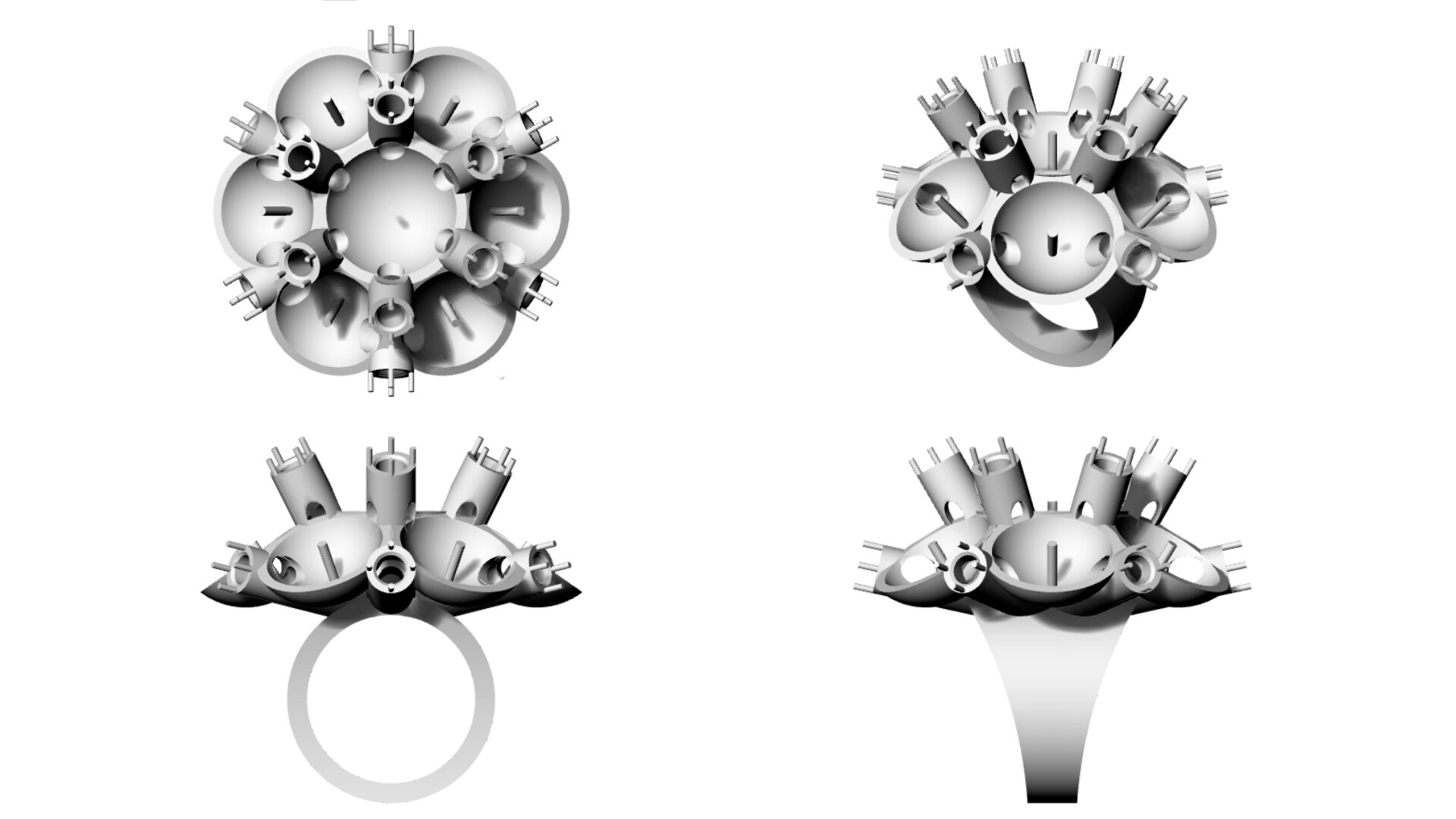COCKTAIL RING
History
Cocktail rings were originally dramatic rings that had large center stones and were accented with pavé diamonds. However, nowadays any "statement" ring is generally called a cocktail ring. These large rings are usually worn on any finger.
The history of the cocktail ring goes back to the American prohibition era of the 1920s. During this time, alcoholic beverages were banned. This caused people to hold illegal drinking parties, including cocktail parties. The 1920s were a time of great social change, especially for women, who enjoyed greater freedom, most notably, the freedom to vote. Women's freedom was expressed in the flapper fashions of the time, which favored short hair and short skirts. Women enjoyed smoking and drinking, the freedom of the contraceptive cap, and greater spending power. Not surprisingly, the glamorous Art Deco jewelry worn in the 1920s reflected this new-found consumerism.[1]
"New Women" of the Jazz Age would sip these sumptuous cocktails at clandestine parties, clad in their most glamorous gear including oversized gemstone rings, which were the ultimate accessory of excess. In the 1920s, the most valuable cocktail rings showcased large diamonds or other precious gemstones such as emeralds and sapphires set in platinum or gold and surrounded by pave diamonds. More interesting designs used colorful gemstones such as opal, or novel and abstract shapes.
In other words, the cocktail ring was associated with the classic “independent woman” and was an ironic response to prohibition as women used to drink liquors and enjoy in total secrecy by wearing the cocktail ring on the same hand that wielded an illicit cocktail.[2]
The cocktail ring gets its name from cocktails as women used to order their drinks by raising their right hand and showing their ring. In this way cocktail ring used to attract others attention. The Cocktail ring became popular again in the 1950-1960s. Peace and prosperity reigned in the I950s and a sense of security and normalcy replaced the tribulations of the war years. The increasingly popular automobile facilitated outings, and a favorite entertainment was going to the movies.
Television broadcasting expanded rapidly after World War II, becoming an important mass medium for advertising, propaganda, and entertainment. For Hollywood, everything was larger than life.... The diamonds were bigger, the furs were thicker...there were miles of bugle beads, diamonds and sequins. Hollywood was paved with glitter, shine and glory.” The cocktail ring was perfect for the screen with its big bold expression and its attention seeking expression.
original from National museum collection
COCKTAIL ring
Designed by: Kristian Nilsson
Material: white gold, South Sea pearls and diamonds
Size 5 x 2 cm
Year: 1976
Photo credit: Nationalmuseum
The ring made by Kristian Nilsson, a Swedish jewelry designer that was active in the second half of the 2000-century. Kristian's jewelry compositions broke with traditional functionalism, which at the time characterized Nordic design during this time.
Nilsson's ring follows the classical cocktail ring layout with a big center stone, traditionally this stone should least be 3 carats in size, or bigger. The center stone is usually surrounded by brilliant cut diamonds set in pave settings.
Still, in modern times, wearing a cocktail ring with big gemstone and surround it with brilliant cut stones are considered as one of the best ways to get noticed.
re-designed RING
RE-DESIGN
It is rare that you see someone wearing a ring that has a center stone that is 3 carat or bigger today, theses stones are rare and just like Nilsson’s piece I chose to use a Pearl as the center piece.
A cocktail ring is all about getting attention and attraction, I have used one center pearl that is 15 mm and I have surrounded it with six 13 mm pearls in a halo setting, to make it more eye catching. The ring has an explosive expression that has been archived by surrounding the pearls with brilliant cut sones that are set in suspended tube settings.
Technology has created greater possibilities in design styles and variations. Precious metals can pretty much be turned into any shape and form and set with micro pave colored gems. These small closely set stones have, in a sense, replaced that large singular stone but can still be equally as dramatic! Designers can also employ enameling techniques with these smaller set stones to create intricate designs
process picture
3d-model of redesign
Footnotes
[1] https://www.gemselect.com/other-info/the-history-of-cocktail-rings.php
[2] https://blog.sehdevjewellers.com/history-characteristics-cocktail-ring/
This project was made possible with the support of



